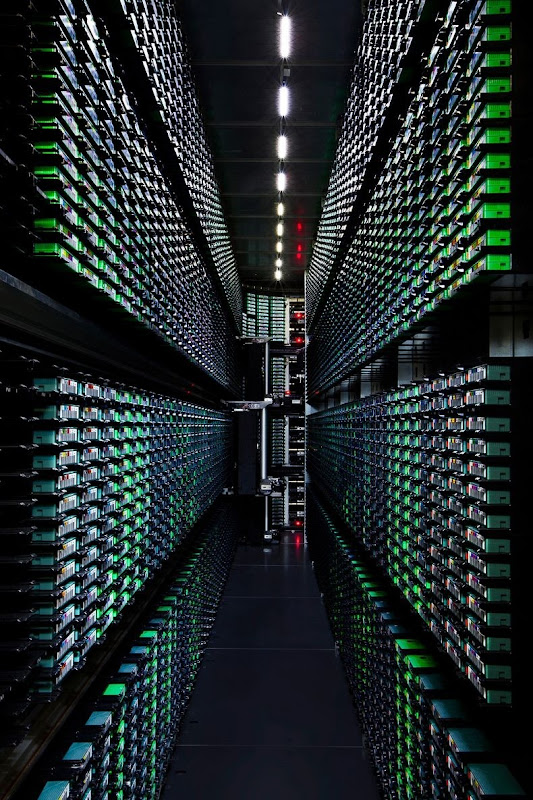Google has just launched a new site that offers visitors a glimpse into the massive data centers that power Google. The site features photographs from inside some of the eight data centers that Google Inc. runs in the U.S., Finland and Belgium. Google is also building data centers in Hong Kong, Taiwan, Singapore and Chile.
Virtual tours of a North Carolina data center also will be available through Google's 'Street View' service.
You can read more about the history and evolution of Google’s infrastructure on this Wired article.
From Google: From Google: Inside our campus network room, routers and switches allow our data centers to talk to each other. The fiber optic networks connecting our sites can run at speeds that are more than 200,000 times faster than a typical home Internet connection. The fiber cables run along the yellow cable trays near the ceiling.
From Google: Our Council Bluffs data center provides over 115,000 square feet of space. We make the best out of every inch, so you can use services like Search and YouTube in the most efficient way possible.
From Google: Hovering above the floor in Council Bluffs, Iowa, the scale of our data center there begins to take shape. Huge steel beams both support the structure and help distribute power.
From Google: Plastic curtains hang in a network room inside our Council Bluffs data center. Here we serve up cold air through the floor, and the clear plastic barriers help keep the cold air in while keeping hot air out.
From Google: These colorful pipes are responsible for carrying water in and out of our Oregon data center. The blue pipes supply cold water and the red pipes return the warm water back to be cooled
From Google: Our pipes aren't the only colorful things at our data centers. These cables are organized by their specific hue. On the floor, this can make things less technical: “Hand me a blue one."
From Google: Blue LEDs on this row of servers tell us everything is running smoothly. We use LEDs because they are energy efficient, long lasting and bright.
From Google: Server floors like these require massive space and efficient power to run the full family of Google products for the world. Here in Hamina, Finland, we chose to renovate an old paper mill to take advantage of the building's infrastructure as well as its proximity to the Gulf of Finland's cooling waters.

From Google: In case anything should happen to our data, we have it all backed up. One of the places we back up information is here in our tape library. Robotic arms (visible at the end of the aisle) assist us in loading and unloading tapes when we need to access them.
From Google: Storage tanks like these can hold up to 240,000 gallons (900,000 liters) of water at any given time. This insulated tank holds water that we'll send to the heart of the data center for cooling.
From Google: Each of our server racks has four switches, connected by a different colored cable. We keep these colors the same throughout our data center so we know which one to replace in case of failure
From Google: A rare look behind the server aisle. Here hundreds of fans funnel hot air from the server racks into a cooling unit to be recirculated. The green lights are the server status LEDs reflecting from the front of our servers.
From Google: Steam rises above the cooling towers in The Dalles data center in Oregon. These plumes of water vapor create a quiet mist at dusk
From Google: This family of deer have moved in next to our Council Bluffs, Iowa center.
From Google: "Mike Barham swaps out a motherboard. When server parts break, we first try to repair them. If we can't, we break them up into raw materials (steel, plastic, copper, etc.) and recycle the components."


























What are the yellow and green pipes?
ReplyDeleteMy thought as well, seems they are information about users (yellow) and cash from advertisers (green, of course).
ReplyDelete